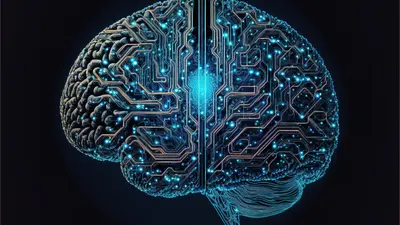Brains, Computers, and the AI Revolution
Rosalyn Moran
About the Course
In recent years the research into AI has made dramatic strides into revolutionising writing, image generation and computing capabilities. But, how do these systems work? And what can the brain's processes teach us about optimising AI? Join Professor Rosalyn Moran, leading professor of computational neuroscience and deputy director of the AI Institute at King's College London, as she delves into AI, the theory of active inference, and what our brains tell us about the AI of the future.
By the end of the course, you will have learned:
- How the brain computes and processes information.
- The parallels between brain computation and artificial intelligence.
- How biological mechanisms can inspire more efficient AI design.
- The theory of active inference and its role in understanding cognition.
- How brain-based models of computation help interpret neurological disease.
- The future of AI shaped by insights from neuroscience and physics.
As part of the course there are in-video quiz questions to consolidate your learning, suggested further readings to stimulate a deeper exploration of the topic.
IAI Academy courses are designed to be challenging but accessible to the interested student. No specialist knowledge is required.
About the Instructor
-
Rosalyn Moran
Rosalyn Moran is a Professor of Computational Neuroscience and Deputy Director of the King's Institute for Artificial Intelligence at King's College London. Her work charts a revolutionary new approach to training AI's instead of traditional large language models. Instead Rosalyn's work starts with how our brains respond to stimuli and works backwards to design AI's capable of genuine self-understanding and novel problem solving. In tests, her AI was even able to defeat a traditional AI at Doom.
Alongside her academic career, Rosalyn is the director of a new AI Start-up called Stanhope AI, editor of the Neuroimage and Neuroimage Clinical Journals and was a former senior lecturer at Bristol University.
Course Syllabus
-
Part 1: The brain and AIHow does the brain compute? How can we apply the brain's biological tips and tricks to streamline AI?
-
Part 2: Physics, neurotransmitters and diseaseWith our understanding of brain computation, how can we interpret neurological disease?
Suggested Further Readings
- Friston, K., Life as We Know It: Active Inference and the Origins of Consciousness, (Cambridge, MA: MIT Press, 2024).
- Clark, A., Surfing Uncertainty: Prediction, Action, and the Embodied Mind, (Oxford: Oxford University Press, 2016).
- Dayan, P. and Abbott, L. F., Theoretical Neuroscience: Computational and Mathematical Modeling of Neural Systems, (Cambridge, MA: MIT Press, 2001).
- Marcus, G., Rebooting AI: Building Artificial Intelligence We Can Trust, (New York: Pantheon, 2019).
- Hinton, G., Neural Networks for Machine Learning, (Cambridge: University of Toronto Lecture Notes, 2012).


